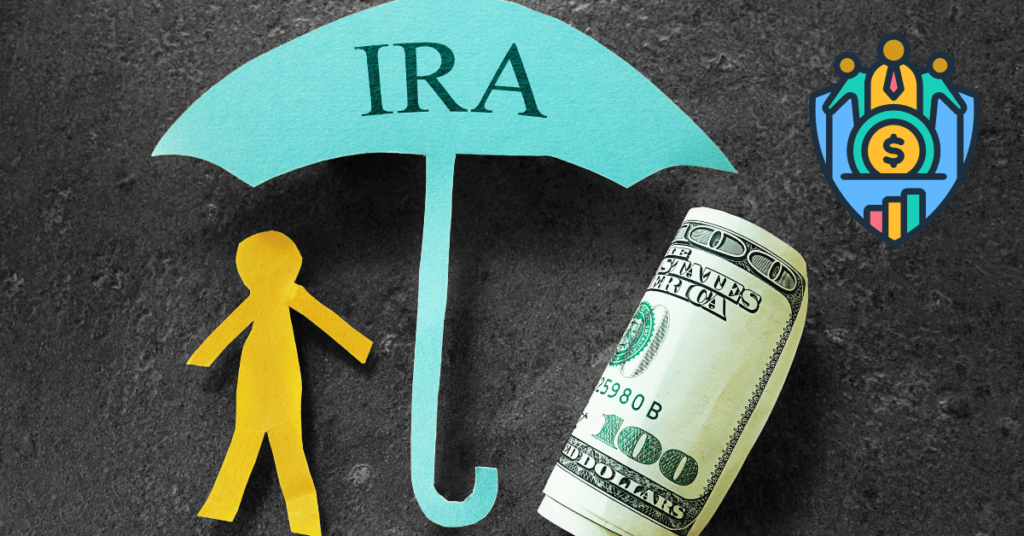An Individual Retirement Account (IRA) is one of the most popular and flexible options for building retirement savings. With the ability to contribute pre-tax or after-tax dollars, IRAs can help you grow your retirement funds over time through tax-advantaged growth.
This article will explore the different types of IRAs, contribution limits, tax benefits, and strategies to maximize your savings.
Types of IRAs
1. Traditional IRA
A Traditional IRA allows you to contribute pre-tax dollars, which means that you get a tax deduction for your contributions. Your money grows tax-deferred, and you only pay taxes when you withdraw the funds during retirement.
- Contribution limits: For 2024, you can contribute up to $7,000 if you’re under 50, and $8,500 if you’re 50 or older.
- Eligibility: Anyone with earned income under age 70 ½ can contribute.
- Tax treatment: Contributions are tax-deductible, but withdrawals in retirement are taxed as regular income.
2. Roth IRA
A Roth IRA differs from a Traditional IRA in that contributions are made with after-tax dollars. However, qualified withdrawals in retirement are tax-free, which can provide significant benefits.
- Contribution limits: Similar to the Traditional IRA, the limit for 2024 is $7,000 if you’re under 50, and $8,500 for those 50 and older.
- Eligibility: Your ability to contribute phases out if your Modified Adjusted Gross Income (MAGI) is over certain limits. For 2024, contributions begin to phase out if you earn more than $153,000 (single) or $228,000 (married filing jointly).
- Tax treatment: Contributions are not tax-deductible, but all qualified withdrawals in retirement are tax-free.
Maximizing Contributions
1. Start Early
One of the best ways to maximize your IRA savings is to start contributing as early as possible. Thanks to compound interest, even small contributions made early in your career can grow substantially over time.
- Example: If you contribute $5,000 annually to a Roth IRA starting at age 25, with a 7% annual return, by the time you’re 65, your account could grow to over $1 million.
2. Max Out Your Contributions
Each year, aim to contribute the maximum allowable amount to your IRA. This ensures you’re taking full advantage of the tax benefits and maximizing your long-term growth.
- Catch-up contributions: If you’re 50 or older, be sure to take advantage of catch-up contributions, which allow you to contribute more than the standard limit.
3. Take Advantage of Employer Contributions (If Applicable)
If you have access to a SEP IRA or SIMPLE IRA through your employer, you may receive employer contributions in addition to your own. Maximize these contributions by contributing as much as possible to these plans.
Investment Strategies for IRAs

1. Diversify Your Investments
Maximizing your IRA savings isn’t just about contributing regularly—it’s also about making smart investment decisions. Diversify your investments across different asset classes, such as stocks, bonds, and mutual funds, to reduce risk and optimize growth.
- Stocks: Higher potential returns, but also higher risk.
- Bonds: Lower risk and more stability, but with lower returns.
- Mutual Funds: Offer diversification and professional management in one package.
2. Rebalance Regularly
Over time, the allocation of your IRA investments may drift from your original strategy due to market fluctuations. Regularly rebalancing your portfolio ensures that your investments stay aligned with your goals and risk tolerance.
- Example: If your target allocation is 70% stocks and 30% bonds, but due to a stock market surge your portfolio is now 80% stocks, consider rebalancing by selling some stocks and buying bonds.
3. Consider Low-Cost Index Funds
Many experts recommend investing in low-cost index funds, which track the performance of a specific market index. These funds have low fees, which means more of your money stays invested and working for you over the long term.
- Advantages: Low fees, broad market exposure, and less need for active management.
Tax Considerations and Withdrawal Strategies
1. Minimize Taxes on Withdrawals
If you’re using a Traditional IRA, withdrawals are subject to income tax. To minimize the tax impact, consider spreading out your withdrawals over multiple years to avoid jumping into a higher tax bracket.
2. Required Minimum Distributions (RMDs)
Once you turn 73 (as of 2024), you must start taking Required Minimum Distributions (RMDs) from your Traditional IRA. Failing to do so can result in hefty penalties, so be sure to plan ahead.
- Roth IRAs: Roth IRAs are not subject to RMDs, which means you can let your money grow tax-free for as long as you like.
3. Consider Converting to a Roth IRA
If you expect to be in a higher tax bracket in retirement, or if you want to avoid RMDs, consider converting some or all of your Traditional IRA into a Roth IRA. While you’ll pay taxes on the converted amount, future withdrawals will be tax-free.
- Roth conversion strategy: Converting small amounts each year can help manage your tax liability while shifting your savings to a more tax-advantaged account.
Common IRA Mistakes to Avoid

1. Not Contributing Early Enough
Many people wait until they’re closer to retirement to start contributing to an IRA. However, the earlier you begin, the more time your investments have to grow.
2. Withdrawing Too Early
If you withdraw from your IRA before age 59½, you’ll likely face a 10% early withdrawal penalty, in addition to regular income tax on the amount withdrawn (for Traditional IRAs).
3. Ignoring Fees
High investment fees can eat into your returns over time. Pay close attention to the fees charged by the mutual funds or investment products in your IRA and opt for low-cost options whenever possible.
Conclusion
Maximizing your retirement savings with an IRA requires careful planning, consistent contributions, and smart investment decisions. Whether you choose a Traditional or Roth IRA, starting early and contributing regularly can help ensure a comfortable retirement. By diversifying your investments, rebalancing regularly, and taking advantage of tax-efficient strategies, you can build a robust retirement portfolio that will serve you well in your non-traditional retirement.
If you have any further questions feel free to comment down below or contact retiresmart for any help!
FAQs
Can I contribute to both a Traditional IRA and a Roth IRA?
Yes, you can contribute to both, but your total contributions to all IRAs cannot exceed the annual limit ($7,000 or $8,500, depending on your age).
What happens if I contribute more than the IRA limit?
Excess contributions are subject to a 6% tax penalty. If you find that you’ve contributed too much, you can withdraw the excess amount by your tax filing deadline to avoid the penalty.
Can I still contribute to an IRA if I’m covered by a 401(k)?
Yes, you can contribute to both an IRA and a 401(k). However, your ability to deduct contributions to a Traditional IRA may be limited based on your income and tax filing status.
What is a backdoor Roth IRA?
A backdoor Roth IRA is a strategy where high-income earners can contribute to a Traditional IRA and then convert it to a Roth IRA, circumventing the income limits on direct Roth IRA contributions.
When can I start withdrawing from my IRA without penalties?
You can start withdrawing from your IRA without penalties at age 59½. However, for Roth IRAs, the account must also be open for at least five years to avoid penalties on earnings.




